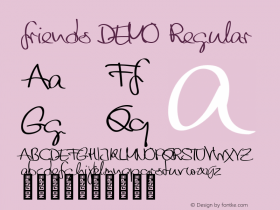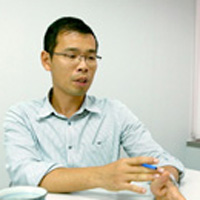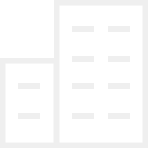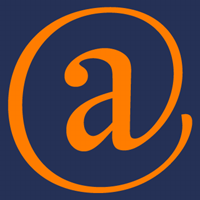
In Foundry Focus, our series of spotlights on type foundries represented by FontShop, the FontFeed interviewed Paul van der Laan and Pieter van Rosmalen. Both are experienced type designers who have had typefaces published by Linotype, FontShop, House Industries, and Garagefonts. Two years ago they joined forces as Bold Monday, the typographical equivalent of a so called "indie" record company where a DIY mentality and artistic freedom are the highest values. The Bold Monday collection is therefore diverse and reflects the personal fascinations from its designers.
Paul van der Laan operates from a studio near the seaside in The Hague as a typographic designer. In 2000 he founded Type Invaders, his privately owned studio for type and typography. Since 2002 he is a professor in Type Design at the Royal Academy of Art in The Hague, and regularly gives workshops and lectures about type design at various schools and conferences. He is the designer of various typefaces including Linotype Rezident, Flex, Feisar, Chalet Comprimé, and over the years has collaborated extensively with Mike Abbink to produce FF Kievit Pro, FF Milo Pro, and FF Milo Serif.
Pieter van Rosmalen works and lives in The Hague, where he runs a graphic design studio named CakeLab. He is founder of CakeType, a small independent type foundry, as well. He studied advertising and graphic design at St. Lucas in Boxtel and typography and type design at the postgraduate course Type and Media at the Royal Academy of Art in The Hague. Pieter designed various typefaces for Garagefonts and CakeType; KPN Display, a typeface for KPN – Royal Dutch Telecom; Hangil E-type for the road signage of South Korea; and the correspondence typeface Emma for Dutch design agency Teldesign.


Paul van der Laan
Where does your love for typography and type design stem from?
P A U L V A N D E R L A A N| "My family has strong ties with the graphic industry – uncles of mine were printer, lithographer, or setter, and my father ran a bookbinding business for all his life. This background certainly played a part when in the mid-eighties (when I was about 14 years old) I started designing posters for events being organised at my high school. I also did the lay-out for the school newspaper, back in the day that all text matter was set with a typewriter, and everything around it needed to be drawn and pasted. For these creations I usually drew all the type myself, based on examples found in (computer) magazines. Those were primarily übercool Letraset letters that were relatively easy to construct with ruler and compass (and occasionally were enhanced with highlights, chrome and shadow effects)."
"Besides that I also liked to design pixel fonts on my ZX Spectrum home computer. Each character had to fit on an 8 x 8 grid. But even within such severe restrictions one was still able to imbue these typefaces with a good deal of character. I used those pixel fonts in demos I programmed myself for friends, or in computer games coded by my brother."



Pieter van Rosmalen
P I E T E R V A N R O S M A L E N| "My father is very creative; he paints, draws, and plays music. For my sisters and me he created a stop motion animation about two bears Bib and Bob. I was stimulated from a very young age to develop my creativity. At high school I drew comic books, and also designed the covers with striking three-dimensional letters."
"After high school I attended SintLucas in Boxtel, where two teachers instilled into me the love for typography and type design. I simply loved rub-down lettering from Mecanorma and Letraset, and studied the FontShop and Mecanorma catalogues for hours at end."

Original drawings for Flex by Paul van der Laan, made at KABK, Den Haag.
What inspired you to take up type design?
P A U L V A N D E R L A A N| "A good friend of mine from these days enrolled at KABK in The Hague after his graduation, to study graphic design. When I went to visit him there and discovered all those beautiful drawings of letter designs pinned to the walls, I immediately knew I also wanted to do that. And I fantasised secretly of one day being able to turn my favourite hobby into a full-time occupation."
P I E T E R V A N R O S M A L E N| "I was fascinated by the lettering and type designs of Neville Brody, and started emulating this style, drawing and digitising alphabets in the Fontmonger application. Between 1991 and 2000 I designed dozens of typefaces, which I bundled in a bulging document file. After having worked as a graphic designer for ten years and having drawn letters in my free time, I decided to enrol the Type & Media postgraduate course at KABK in 2001. This is where Paul and I met."

KPN Display is part of the redesign of the corporate identity of KPN (Royal Dutch Telecom) by Studio Dumbar. The type family has three weights, each containing over 700 glyphs, categorised in three different styles (sets) from sober to exuberant. Every style has a set of connected lowercase glyphs (the slogan line of KPN is "Sluit je aan" which means "connects you"). Every weight also has a collection of swashed lowercase and uppercase characters.
How did you start collaborating?
P A U L V A N D E R L A A N| "Pieter and I learned to know each other in 2001, when Pieter studied the second phase of the Type Design programme at the KABK. I was one of his teachers, which in a way may seem a little strange since he is a couple of years my senior. After he graduated we kept in touch. We both worked as freelance type designer/graphic designer; me under the monicker Type Invaders, and Pieter as CakeType. Because of our parallel professional lives, and also because Den Haag is a small place after all, we inevitably bumped into each other time and again."
P I E T E R V A N R O S M A L E N| "In the beginning of 2006 I contacted Paul to help me with KPN Display, a custom typeface I was developing for KPN, the Dutch landline and mobile telecommunications company. I was responsible for the actual design, while Paul primarily took care of the technical aspects: OpenType features, hinting, and so on. This collaboration was such a pleasant and fruitful experience that Paul in turn decided to work with me again. At the end of 2007 he invited me to collaborate on Deuno Sans, another custom typeface, this time for Mexican bank Banco Deuno."


Designed in cooperation with Mike Abbink at Saffron Brand Consultants, Deuno Sans is a custom typeface for El Banco Deuno, a Mexican bank that provides microcredit. The design draws its inspiration from Central American brush lettering on shops and houses. To preserve a sense of liveliness the lettershapes are deliberately made imperfect and the font switches automatically between alternate versions of letters.
At what point did you formally join forces?
P A U L V A N D E R L A A N| "Around the same time in 2007 I was invited by MetaDesign Berlin to send them my portfolio. They were looking for a partner for a potential corporate typeface commission. When reading the briefing I quickly realised this probably would be a (very) important job, and that I could definitely use Pieter's help again. To improve our chances for winning the account we sent in a joint portfolio in which we presented about 16 projects."
"To our surprise we were selected in December 2007 to compete in a pitch with three other parties. You can imagine our excitement when we learned the client was German automobile manufacturer Audi. This pitch confronted us with an entirely new situation, as we had never collaborated on a typeface from the very beginning. Yet already during the concept faze we quickly reached similar conclusions, and were able to merge our sketches into a coherent and harmonious design. When to our immense joy we eventually also won the pitch phase in May 2008, it became clear we needed to find a formal construction to execute this assignment. The project was so extensive that it made little sense to appoint one of us two as the main contractor, who'd have to hire (and pay) the other one – up till now more than one and a half year of billable hours have already been invested in this project. This is why we officially founded Bold Monday in June 2008."






The new corporate typeface of Audi was art directed by MetaDesign, and designed by Paul van der Laan and Pieter van Rosmalen following an international competition. Introduced in 2009 – the year the company celebrated its 100th anniversary – this new typeface family represents self-confidence, dynamism and style combined with meticulous attention to detail.
Bold Monday is quite an unusual name for a type foundry.
P A U L V A N D E R L A A N| "That was our intention. The name is the result of a search for something that did not include words like "type", "font" or "letter", but still expressed the two passions that Pieter and I share. We both love type design (obviously) and British 80s synth-pop."
P I E T E R V A N R O S M A L E N| "Immediately after the establishment of our new business we decided to merge our separate type foundries – which we both sold through our own separate websites Type Invaders and CakeType – and market all our fonts under the new brand name. By May 2009 we had our common type library sorted out – in the starting phase many typefaces were changed and expanded, and all fonts were tested again and remastered. FontShop was the first to distribute our library, and in January 2010 we launched our own website."


In August 2010 Dutch broadcasting corporation VPRO launched their new identity which was designed by Amsterdam-based agency Thonik. Based on the four letters that the studio had designed for the new logo a custom typeface was designed by Paul van der Laan. The typeface family was eventually executed in two weights and includes special ligatures (such as the Dutch 'ij') and alternative shapes.
And since then?
P A U L V A N D E R L A A N| "As Bold Monday we already have done several other custom type projects, amongst which "KPN Headline", an update for KPN; "NN Dagny Display", a modification for Nationale Nederlanden, one of the biggest insurance companies in the Netherlands; and a new typeface for Dutch public broadcaster VPRO which premiered last summer. In addition to this we continually work at expanding our library with new designs by ourselves as well as kindred type designers like Jacques Le Bailly."
When designing type, are you primarily concerned with the functional or with the aesthetic aspects? Does the intended use of the design shape the characters, or do you design beautiful letter forms which inform a specific application?
P A U L V A N D E R L A A N| "That is entirely dependent on whether you design a typeface for a client (one extreme) or for your own enjoyment (the other one). In the first case you work within a framework defined by someone else, the client. That framework usually is a combination of aesthetic and functional parameters, and your design has to comply with them. In the other case you create your own framework, which makes it possible to have the functionality be subordinate to the aesthetics."
"As we were both trained as graphic designers I think we automatically view our work from a functional angle. If you have no idea yourself how to apply a certain typeface it becomes difficult to make informed decisions about its design, because every decision then becomes equally good or bad. You need perspective."



Enorm klein ("Enormously Small") showcases the original Capibara Classic in a delightful little booklet collecting the biggest amongst the smallest, and the smallest amongst the biggest.
Indeed your work shows you also are graphic designers. Pieter's delightful miniature specimen book Enorm klein was shortlisted for the Dutch Design Awards 2009, and even awarded a Certificate of Typographic Excellence by the TDC56 judges.
P I E T E R V A N R O S M A L E N| "I wanted to do something special with my pixel design Capibara. I designed it as part of a collection of 26 bitmap or grid based display or text typefaces for print and screen. What's special about this geometric design is that it is constructed solely of horizontal and vertical strokes. Its character shapes are inspired by early 20th century typographic experiments by Constructivist artists such as Theo van Doesburg and H.Th. Wijdeveld. Since then I have redesigned Capibara, gently rounding the corners and moving away from the strict grid, to escape the harshness and coldness that characterises most geometric designs. The type family now has 5 weights in both proportional and monospaced variants."
"The typeface is named after my favourite animal – the South American capybara, the largest living rodent in the world. For Enorm Klein ("Enormously Small") I assembled a collection of the biggest amongst the smallest, and the smallest amongst the biggest. The entire booklet – including text and borders – is typeset in Capibara Classic (the original 2002 design), with many illustrations. The 166 page booklet measures 58×80 mm and has an intricately designed laser-cut dust-jacket. It is available through CakeType."


Nitti Light is a custom version of the monospaced Nitti, fine-tuned for use in the hugely successful iA Writer app for the iPad.
Another success story is the inclusion of Nitti in iA Writer for iPad.
P A U L V A N D E R L A A N| "Late September Information Architects released iA Writer for iPad in the App store. iA Writer is a beautifully serene no-nonsense text editor that aims to be totally distraction free. Earlier this summer Oliver Reichenstein, founder of iA and designer of the app, fell in love with Nitti. He was so enthusiastic about our typeface while they were developing iA Writer that he decided to make it the only one available in the app, and not allow the user to change the font. As he explains it on the iA blog "the font transports the provisory character of drafting and forces you to read slowly and precisely without being tedious to look at". At his request we fine-tuned Nitti specifically for use in iA Writer, supplying a modified version with slightly tighter spacing and some adjusted glyphs."
"We were stunned by the results, and by the success of the app. In three weeks, iA sold over 13,000 downloads of the app, which keeps receiving rave reviews. In those reviews there is an almost universal appreciation of the font and the typography in iA Writer. Screenshots don't really do this app justice, so if you truly want to experience it we invite you to try Writer for yourself."


Aniek in use in Op z'n Raams, the jubilee book celebrating 30 years of De Speelwinkel in Gouda.
You seem as much as ease with serious type as you are with whimsical designs, yet you seem to take the fun typefaces as seriously. One such example is Aniek.
P I E T E R V A N R O S M A L E N| "The current trend in digital scripts inspired by handwriting is that they must have advanced OpenType features and lots of alternates and ligatures to mimic the irregularity and imperfection of the human hand. Yet I believe there is still room for scripts that are "honest" and acknowledge the fact that they are digital fonts. Aniek is my interpretation of the handwriting of a former girlfriend. The typeface tries to capture its charm with monolinear contrast and soft endings, which echo very clearly the characteristics of the strokes of a felt tip pen on paper. Distinguishing features are that its letters are non-connected, and it slightly slants to the left where most other script typefaces are slanted to the right. To achieve optimal legibility the proportions are harmonised and the spacing has been made as regular as possible."

Panno Sign (top) in use in South Korea, and Panno Text (bottom).
Although it is situated at the opposite side of the spectrum, Panno is surprisingly friendly.
P I E T E R V A N R O S M A L E N| "Panno was developed as a signage typeface for a very specific application. In South Korea street names can contain up to three different notations for one name – Korean, Chinese, and Latin. One of the main concerns when designing Panno Sign was to save as much space as possible whilst maintaining optimal legibility. This was achieved by giving it narrow proportions, a very large x-height, and surprisingly open counters. The resulting typeface is a compact sans with a little contrast that looks simple and robust. It is a perfect alternative for the ubiquitous DIN in situations where the latter appears too constructed or too cold. besides being offered in two styles – Normal and Rounded – each style is available in two versions. Panno Sign Negative optically corrects the weight when reversed out, to make it look identical to the Positive variant."
"When Panno Sign was finished I saw the potential for a text variant. I reworked and extended it to Panno Text, which is optimised for continuous text. A lot of shapes were carefully adapted, and the spacing completely reworked to optimise legibility in small sizes. Furthermore the family was expanded to six weights, which all come with their corresponding italics."


At the most recent type conferences the first official Bold Monday type specimen was included in the goodie bags. What was the concept behind it?
P A U L V A N D E R L A A N| "The theme we chose for our first ever publication is (surprisingly) "Monday". It can be interpreted in many different ways. We approached a number of fellow designers whose work we admire, and who incidentally are all friends of us. We assigned each of these designers one of our type families, one we thought matched him/her/them best, and invited them to create a spread. One of the contributors even supplied us (after some impressive research) a comprehensive list of Monday trivia which we were happy to include in the specimen. For the translation of the text into numerous languages we received assistance by (ex-)Type & Media students."
"We ended up with a very nice list of designers who participated in this project:
Aniek | Koen Geurts / 't Brandt Weer, The HagueCapibara | René Knip / ARK, PingjumCapibara Mono | Max Kisman, AmsterdamFeisar | Donald Beekman / DBXL, AmsterdamFeisar Express | Tobias Peier / Bodara, ZürichFlex | Indra Kupferschmid, Bonn/SaarbrückenNitti | R2, PortoNitti Typewriter | Liza Enebeis & Marc van der Heijden / Studio Dumbar, RotterdamPanno Text/Panno Sign/Panno Rounded | Léon & Loes, RotterdamPinup | Dennis Koot / Koot, Den HaagPixel Package | Bart de Haas, Den HaagStanley | Jesse Skolnik / Barlock, Den Haag"


First trial of a number of inline capitals in different stroke widths.
To conclude, could you give us a sneak peek at a future project?
P A U L V A N D E R L A A N| "The architectural lettering at the top is Duiker, an alphabet I designed in 2001 for the building my studio is located in. It is very much a personal project. Since then I have slowly developed the face, adding weights and styles. Because the design hasn't got anything to with the work of Jan Duiker I decided to change its name into Oskar. I took advantage of the relatively calm summer months to start on a series of inline capitals in different stroke widths. All together they will be a bigger family of titling typefaces inspired by early 20th century advertising lettering. With any luck it should be finished before the end of the year, depending on how many commissions we get."
Header image:original photograph of Pieter van Rosmalen and Paul van der Laan by Jarno Verhoef.
